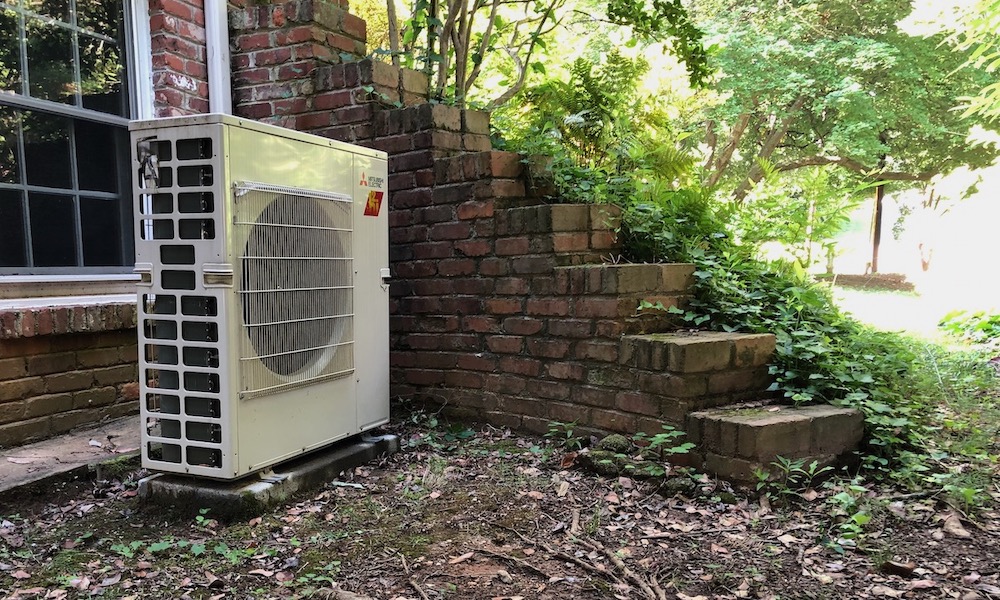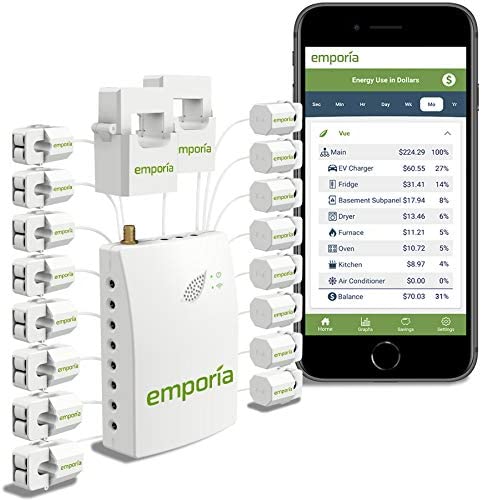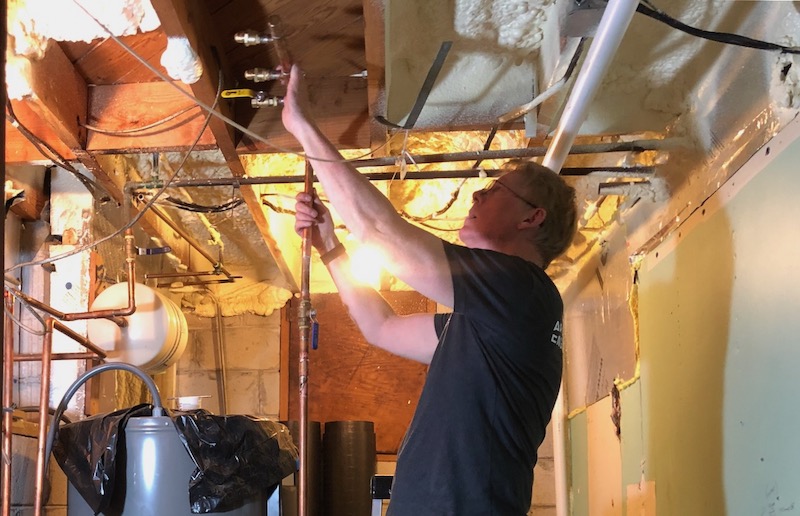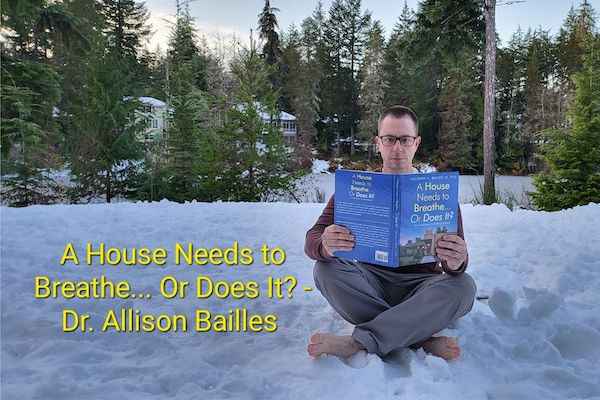The Top 10 Articles in the Energy Vanguard Blog in 2022

It’s been a good year in the Energy Vanguard Blog. Counting this one, I’ve published 46 articles during the year. Of the previous 45 articles, I think the following might be ten most important ones. This is just my own assessment. It’s not based on how much traffic or how many comments they got. I also haven’t ranked them. They’re just presented as my top ten and listed in chronological order.
Roof Overhangs and Moisture Problems
A look at the results of a study on wall failures and overhang depth in the Pacific Northwest.
What Is a Mini-Split Heat Pump?
My explanation of the terms used to describe mini-splits and the confusing way they’re often used.
The Central vs Dedicated Return Vent Debate
A lot of people think that if you don’t have a return in every bedroom, your HVAC system won’t work. Those people are wrong.
Air Conditioner Sizing: Load Calculations vs Rules of Thumb
I analyzed the data from a bunch of our 2021 HVAC design jobs to update an earlier study I did. The results are about the same. And the conclusion is definitely the same. Using the old rule of thumb for sizing air conditioners leads to significant oversizing.
Introduction to Whole-House Electricity Monitoring

I finally installed an Emporia Vue electricity monitor at my house this year. And I’m loving it.
My Undersized Mini-Split Heat Pump in a Heat Wave
We had some serious heat in June of this year, and my undersized Mitsubishi heat pump performed like a champ. (I’ve also got an article coming next month on how it performed during the 2022 Christmas cold spell that kept our outdoor temperature way below the design temperature for a few days. Watch this space.)
A Layered Approach to Indoor Air Quality
It’s not just “Build tight; ventilate right.” Getting good indoor air quality requires several measures.
Faster Hot Water Can Change Your Life
This is the article about the building science work I did at my house that had the biggest effect on my life.

Is Wind Washing Reducing Your Insulation R-Value?
Somehow, I had never written about—or even mentioned—wind washing in this blog until late in 2022.
Heat Pump or Furnace: Which Is Better for Comfort?
Believe it or not, providing lower temperature heat over a longer time provides better thermal comfort. (Unfortunately, a lot heat pump haters steered the comments away from the main topic.)
Of course, you should check out some of the other 35 articles, too. A few that I’ll mention here are on the subjects of filter grille advantages (instead of a filter at the air handler), rejected energy (in the big picture of US energy use), the hot water rectangle (a useful design tool), heat pump water heaters and cold basements (about a study from Michigan), how to air-seal an attic access, how to get a continuous air barrier between garage and house (in new construction), and the roof penetrations at greater risk of leaking.
And I also need to mention my biggest writing accomplishment of the year: publishing my book, A House Needs to Breathe…Or Does It? The early feedback has been really positive, and it has been selling well. If you act quickly, you can still get a copy with our December discount of $10 off. Just use the code 10dec1231 before midnight Eastern time on New Year’s Eve when you check out at our store. Just click this photo of Seattle home builder Bryan Uhler to visit the store.
I wish you all a safe and happy celebration of the new year coming in this weekend and a fulfilling and prosperous 2023!
Allison A. Bailes III, PhD is a speaker, writer, building science consultant, and the founder of Energy Vanguard in Decatur, Georgia. He has a doctorate in physics and writes the Energy Vanguard Blog. He also has written a book on building science. You can follow him on Twitter at @EnergyVanguard.
Related Articles
The Top Articles in the Energy Vanguard Blog in 2021
Top 10 Articles in the Energy Vanguard Blog in 2019
My Top 10 Energy Efficiency Articles and Ideas of 2015
Comments are moderated. Your comment will not appear below until approved.
This Post Has 2 Comments
Comments are closed.



A nice recap of a good year. I’ve been following the blog for a long time. I also attended some of Joseph lectures in the early 2000’s when I was building a home. We recently moved back into a house we lived in 15 years ago.
After moving back in it became obvious that the systems we had installed years ago had not held up well. We hired a certified home energy inspector as I had not been keeping up with the developments in retrofitting a home that is now 40 years old. Just a visual inspection showed that the entire hvac system was on the verge of failing. The 6 year old system had developed a leak, the duct work had been completely replaced in 2002 and had failed do to horrible installation and years of service people walking on the duct work crushing the tops of the metal vets and crushing and tearing the r-6 flex duct that had been run across the floor of the attic and then had r-38 blown in insulation cover everything knee deep. The first efforts were at reducing the heat load in the attic. A continuous soffit vent was installed around the entire home. The home had existing ridge vents and had a powered attic fan installed at one point. The original powered attic vent was solar powered but was on the north facing roof and moved very little air. Almost a year after the soffit vents were installed the majority of the garage ceiling came down for no apparent reason. It just seemed that a few decades of no insulation being above the garage allowed enough moisture to be absorbed to soften the gypsum board in that area. But it was insulated in 2000 and came down in 2019 after the soffit vents had been installed. It was after reenforcing the ceiling that it was obvious that the increased exposure to the humid air in the Houston area had been absorbed into the insulation and increased the weight enough to bring the softened drywall down.
After having the preliminary audit done I put together a package to go out for bids. I ended up approaching 16 different highly recommended A/C companies about replacing the entire system. I hired a consultant to do the design and duct sizing calculations. I then had this checked by a second designer that is prominent in my area for the quality of their work, the calculations didn’t match.
Of the companies that were sent the package several didn’t perform the work that needed to be done ( mostly duct work) or couldn’t provide the equipment that was specified. There were just recommendations on brands of equipment and technology’s but it was up to the contractor to put together a system that would perform correctly.
I have a critical need for a highly controlled environment, medical conditions require the humidity be kept between 40-60 percent. The air needs to have a high air quality filtered and humidity controlled air. I suffer from chronic asthma and fibroses of the lungs and I’m fond of breathing.
Of the bids received the pricing varied from $9000 to $45,000. All for a solution to the same home. Only 2 bids were for less than $20,000. One of those bids was to cut a large hole in the living room ceiling to install a new blower, all original equipment and ductwork would be the same and the insulation would not cover the repair of the ceiling, I would have to hire electricians and carpenters to close the hole and wire the new equipment in.
The existing blower was run off a 40 year old 14 gauge wire that got very warm to the touch.
I specifically told all the companies that we were looking at a late fall install as the existing system hadn’t completely failed yet and I wanted the time to heave the work done correctly as well as have a more comfortable environment for the installers to work in. I ended up feeling the need to put up a don’t panic sign near the front door.
The old system was keeping the house at 74 degrees most of the time, it was running constantly from sun up until 11 to 12 at night but was barely keeping up. I did have to turn off the whole home dehumidifier that had been installed a few years before when we first moved in and the system couldn’t keep the house below 65 % humidity.
( I just wanted an ERV but got a dehumidifier).
The majority of the bids were between $25,000- $45,000.
Only 2 were below $25,000 and had made any attempt at supplying the specified equipment.
This was not an exotic equipment request.
I just wanted a 4 ton standard heat pump with a natural gas furnace for emergency heat. Evidently this is a very unusual request in Texas, we have lots of cheep natural gas ( not so cheap anymore as the price has more than doubled in the last 12 months).
I have a 5Kw rooftop solar array that provides 35% or so of my summer peak usage and almost all of my winter needs so moving some of that energy into local consumption seemed prudent.
Other than one outlier all the bids for over $30,000 were for lower grade, what would be considered entry level equipment predominantly RUUD equipment.
I had one company that never set foot in the attic or at the outside unit and recommended Traine equipment for the price of just over $45,000.
A second company proposed a Bosch/ Bryant system using a Bosch heat pump and Bryant gas furnace for $25,000 a $20,000 savings over the Traine system. They also bid a Traine system for just over $30k.
I ended up with a system that met all my specifications, including replacing all the ductwork and tin work, a 20 seer Lennox heat pump, gas furnace, merv 16 25x20x5 air filter and 3 uv lamp fixtures, 2 – Halo- led units, one in the return and one in the supply ducts along with a standard uv lamp in the coil box ( new blue-QR model with a 3 year lamp).
Along with the equipment specifications I had also listed â requirement that there would be a 10% hold back until the system passed a 3 party independent inspection.
So after 3 years of research 8 months of bids, supply side issues I ended up with a very good hvac system. All vents now penetrate the roof and have back flow preventers, originally only the stove vent and dryer vents penetrated the roof the laundry, and both baths just had 2 ft flex attached to the exhaust fans and were buried under the insulation.
The final installed price was $17,000.
It’s obvious that the industry has some serious problems. Mostly untrained contractors that just learned enough to get a state license but have no idea how to properly design, install and test a system that should last for 20 years or so.
So just one company was able to supply, bid, install correctly a modern but not state of the art hvac system.
With the IRA getting ready to pour billions of dollars at this market it’s not looking good for the homeowners.
The contractors are obviously used to dealing with people that are panicking because they have had a major system failure and will significantly over pay for a system out of desperation especially if given a “easy monthly payment 26% interest “ solution.
Thanks for all the information on duct sizing, filtration, heat pumps, moisture management as I’ve been trying to end up with a comfortable, affordable, home that three retired and disabled people can live in.
David Power
Katy TX.
One follow up, we recently had a cold (for Texas) snap. Temperature got down into the mid teens for a few days and had highs in the 30’s for those days. With my new sealed hvac system I still had the problem of low humidity. I’ve run a small ultrasonic humidifier in the few times per winter when we have periods of very low humidity in the 42 year old house we live in and have been working on.
One unusual series of incidents showed me how we can make things worse for ourselves. We are working on sealing the house now that the ducts are tight.
I have a couple different air quality measurement devices in our home. One is made by IQAir from their AirVisual line the other is a dylos dc1100.
We had recently installed a new Lennox x20 heat pump with a natural gas furnace. We we’re staying inside as normal during the cold snap but I noticed that the IQAir monitor was hitting very poor air quality measurements. Checking the dylos it was also showing very high particle numbers. This is with 2 of the large IQAir filter machines running and a merv 16 air filter installed in the main system. The IQAir monitor was advising me to open the windows as the air outdoors was calculated to be much cleaner than the air indoors.
The search began for the source of this bad air. I had a IQAir outside monitor that I installed to see if one of the buildings near me or just the general air quality near me was degraded.
The new sensor showed much cleaner air outside the home. The ventilation cycle didn’t effect the numbers at all leaving me to believe that this might be somehow tied to our brand new hvac system and duct work.
Graphing the data didn’t correlate it to any of our normal household activities, it wasn’t constant but when it occurred it was for hours at a time.
Finally I was able to trace it down to the ultrasonic humidifier, after a number of days we had run out of distilled water and had started using tap water to keep the humidity up. The humidifier is in the master bath and is intended to bring the humidity in the master bedroom up to 40% or so while we are sleeping.
I had noticed that while showering even with the exhaust fan running we would see a spike in the particles detected by the dylos particle counter and had assumed that it was just measuring very small water droplets that were caused by the shower. They always went away quickly after the shower was turned off.
Our water supply is by our local MUD and comes from a couple of deep wells in the area. It seems that there is enough dissolved minerals in the water that running the tap water through the ultrasonic unit had enough dissolved minerals to show up as particles in both units. Going back to distilled water solved that problem. The best tools don’t always lead you to good conclusions. Now I just need to see if I can get the house sealed enough that the low humidity isn’t an issue and I can retire the humidifier permanently.
I probably would never have thought of this as a solution except for the articles on cold air and humidity pointed out here in the blog.